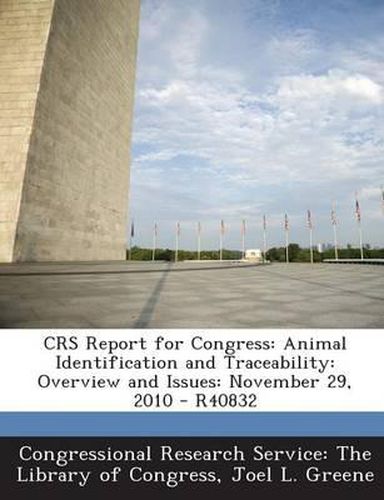Readings Newsletter
Become a Readings Member to make your shopping experience even easier.
Sign in or sign up for free!
You’re not far away from qualifying for FREE standard shipping within Australia
You’ve qualified for FREE standard shipping within Australia
The cart is loading…






Animal identification (ID) refers to keeping records on individual farm animals or groups of farm animals so that they can be easily tracked from their birth through the marketing chain. Historically, animal ID was used to indicate ownership and prevent theft, but the reasons for identifying and tracking animals have evolved to include rapid response to animal health and/or food safety concerns. As such, traceability is limited specifically to movements from the animal’s point of birth to its slaughter and processing location. On February 5, 2010, Secretary of Agriculture Tom Vilsack announced that USDA was revising its approach to achieving a national capability for animal disease traceability. The previous plan, called the National Animal Identification System (NAIS), first proposed in 2002, was being abandoned. In its place USDA proposed a new approach–Animal Disease Traceability–that will allow individual states and tribal nations to choose their own degree of within-state animal identification and traceability for livestock populations. The within-state programs are intended to be implemented by the states and tribal nations, not the federal government. As such, any data collection and storage would be done by state, not federal, authorities. The flexibility is intended to allow each state or tribal nation to …
$9.00 standard shipping within Australia
FREE standard shipping within Australia for orders over $100.00
Express & International shipping calculated at checkout
Animal identification (ID) refers to keeping records on individual farm animals or groups of farm animals so that they can be easily tracked from their birth through the marketing chain. Historically, animal ID was used to indicate ownership and prevent theft, but the reasons for identifying and tracking animals have evolved to include rapid response to animal health and/or food safety concerns. As such, traceability is limited specifically to movements from the animal’s point of birth to its slaughter and processing location. On February 5, 2010, Secretary of Agriculture Tom Vilsack announced that USDA was revising its approach to achieving a national capability for animal disease traceability. The previous plan, called the National Animal Identification System (NAIS), first proposed in 2002, was being abandoned. In its place USDA proposed a new approach–Animal Disease Traceability–that will allow individual states and tribal nations to choose their own degree of within-state animal identification and traceability for livestock populations. The within-state programs are intended to be implemented by the states and tribal nations, not the federal government. As such, any data collection and storage would be done by state, not federal, authorities. The flexibility is intended to allow each state or tribal nation to …